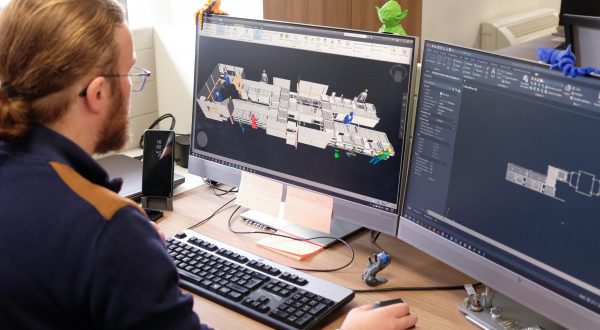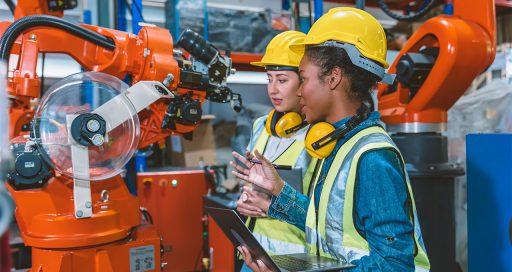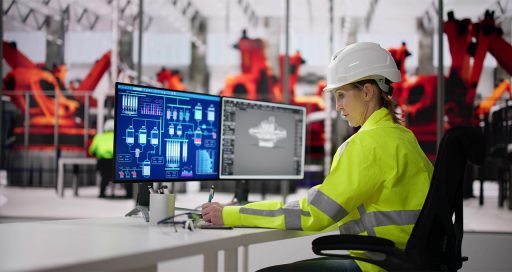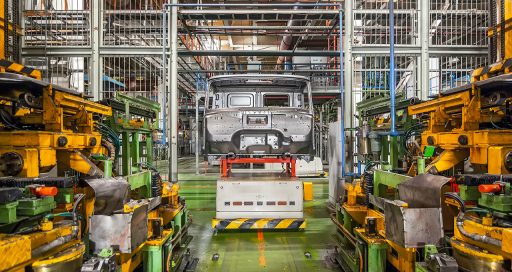Manufacturing sector to stake everything on circular economy
Reading time: 6 min
A major source of CO2 emissions, the manufacturing sector must urgently start pursuing energy efficiency on all fronts. Implementing circular economy principles will help it to accelerate this transition. The factory of the future will be circular as well as smart.
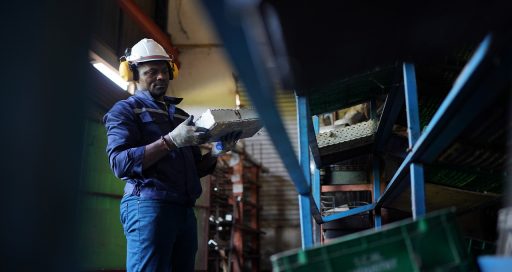
Industry is at a critical crossroads in developed countries as it faces the need to respond to economic sovereignty and energy transition challenges. This is particularly the case for France, which has embarked on a policy that aims to revive a manufacturing sector now only accounting for 10.1% of its GDP (compared with 16% in Europe and 28.3% worldwide) and that must be incorporated into the French National Low-Carbon Strategy (SNBC).
The challenge is all the greater since manufacturing represents 40% of global energy consumption and emits 70% more CO2 than 20 years ago. Businesses must initiate a revolution without delay. The sector is built on a linear model whose guiding principle is the pursuit of infinite growth; by contrast the resource timescale is finite. We must now speed up the transformation of our models while at the same time slowing down the race for growth. This change of gear requires a radical shift from a linear to a circular system.
Only a quarter of manufacturers have started transforming their value chain beyond their core plants.
Faced with the urgency and critical nature of climate issues, the manufacturing world is knuckling down. But there are still many barriers to overcome. A study by the firm OPEO and the Institut national de l’économie circulaire (INEC, the National Institute for the Circular Economy) shows that in 2021, although 85% of manufacturers saw the circular economy as a genuine opportunity to improve competitiveness and develop new markets, less than 27% of them had started transforming their value chain beyond their core plants – a dimension that accounts for less than 5% of the carbon footprint!
Energy efficiency loops
However, there are many entry points into circularity. As well as cutting their emissions, businesses can reduce resource consumption. This includes land, a key factor in resilience at a time when no net land take objectives have triggered a comprehensive reflection process on the use of brownfield sites. The transformation of Renault’s historic Flins facility into the first European plant dedicated to retrofitting and circularity training is a prime example of this.
Further levers exist such as improving energy efficiency through heat recovery, an option selected by ArcelorMittal which, by connecting its blast furnaces in Dunkirk to the district heating network, avoids the emission of 20,000 tonnes of CO2.
Digital technology is also key to accelerating energy-saving loops. Artificial intelligence can be used to check plant output data against energy costs, digital twins to anticipate drops in energy efficiency, and second-hand marketplaces to acquire site equipment, and so on.
For a long time, the circular economy was the poor relation of the public debate on energy transition and the blind spot in related policies. Due to its importance for the economy and its responsibility in terms of greenhouse gas emissions, the manufacturing sector has a major role to play in driving and scaling up this new model.
Lange Zeit stand die Kreislaufwirtschaft im Schatten der öffentlichen Debatte über die Energiewende und wurde auch von der Politik kaum beachtet. Weil sie aber eine strukturgebende Rolle in der Wirtschaft und bei deren Treibhausgasausstoß spielt, muss die Industrie nun darauf drängen, dass sie schnell und in großem Maßstab umgesetzt wird.
“We focus on reuse, which has a much smaller carbon footprint than recycling.”
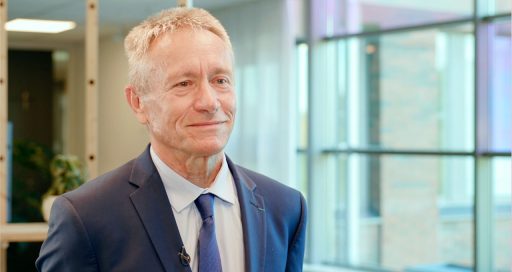
Bruno Nicolas, director of the Actemium brand, explains his circular economy strategy.
What progress has Actemium made with circularity?
B.N. The sustainable development strategy launched by Actemium in 2018 is based on three focus areas: energy efficient industrial processes, low-carbon solutions (renewable energy sources, low-carbon hydrogen, e-fuels and carbon capture) and a circular economy approach. As part of this roadmap we developed Actemium Carbon Tool (ACT), one of the first tools to be aimed at the industrial world and to target Scope 3, which covers all of the company’s indirect emissions. This enables our clients to assess the carbon footprint of the solutions we recommend for them. Of all the focus areas, the circular economy is probably the best driver of carbon footprint reduction at the moment.
What does this mean in terms of supply?
B.N. The circular economy can be based on recycling and/or reuse. The option most readily selected in industry is recycling. However, as an integrator we decided to focus on reuse, not least because it has a much smaller carbon footprint than recycling. That being said, we need to convince clients to opt for new solutions that rely on second-hand equipment. Four or five years ago, no matter how much we stressed the cost and environmental savings, it was hard to get the message across. It is different now: protecting the planet has become a priority and the competitiveness of solutions incorporating reused equipment makes them more attractive.
What type of equipment can you reuse?
B.N. Lots of equipment can be reused, but I’ll give you just two examples. Firstly, by dismantling electrical systems, you can recover circuit breakers that still work very well. We don’t recycle them after checking them; we reuse them by finding a new place for them in other cabinets. Secondly, we recently recovered assembly line handling carts in a car manufacturing plant in eastern France which were transferred to one of our clients in Morocco.
11/16/2023


